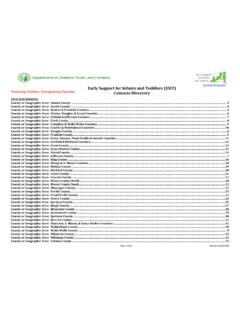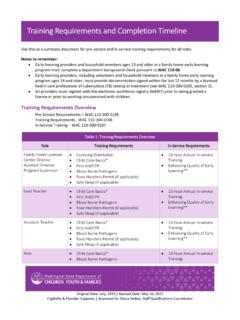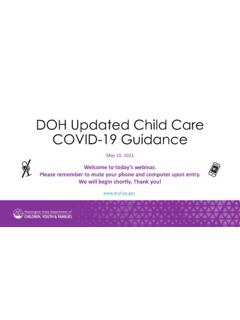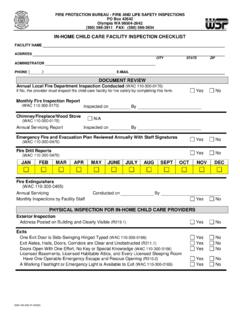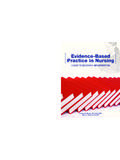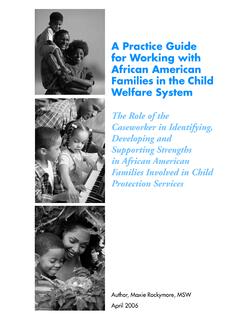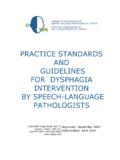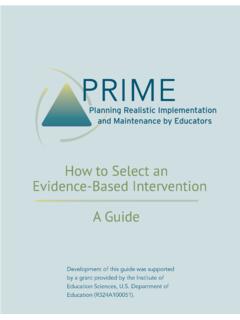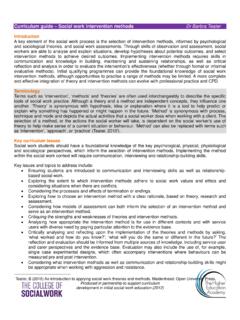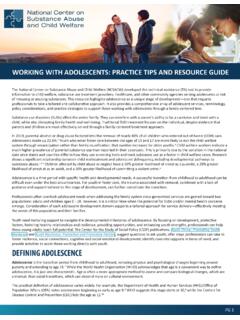Transcription of practice guide: developing functional ifsp outcomes
1 practice guide : developing functional IFSP outcomes practice guide : developing functional IFSP outcomes practice guide : developing functional IFSP outcomes CONTENTS Overview .. 1 The IFSP Process .. 1 Gathering Information from Families .. 2 functional Child Assessment .. 3 functional IFSP outcomes .. 4 outcomes Development .. 5 Completing the IFSP .. 7 Services to Meet the functional IFSP outcomes .. 8 Resources .. 8 Attachment A: Components of a High-Quality, functional Outcome .. 9 Attachment B: IFSP Outcome Review Sheet ..11 Attachment C: functional IFSP outcomes for Children and Families ..12 1 practice guide : developing functional IFSP outcomes Overview Child and family outcomes are the driving force behind early intervention services. The type and frequency of services as well as who the family s providers will be are determined by the outcomes set by the team with the family at the center. Because they are such an important component of the Individualized Family Service Plan (IFSP), it is crucial that the outcomes be functional , participation-based and measurable.
2 The focus of early intervention is on successful participation in everyday activities. Early intervention provides support to families and caregivers so they can enhance their children s learning and development. This focus reflects a paradigm shift from traditional models of service delivery such as treatment/medical, deficit-based or service-based models, to a new paradigm of focusing on outcomes . New models include capacity-building, strengths-based, family-centered and coaching models. Research shows that children learn and develop best when they: Participate in natural learning opportunities that occur in everyday family and community routines and activities; and Are interested and engaged in activities and interactions with familiar caregivers, which in turn strengthens and promotes competency and mastery of skills. (Dunst, Bruder, Trivette, Raab & McLean, 2001; Shelden & Rush, 2001) Caregivers provide multiple opportunities and support for learning and practicing new skills throughout the day (McWilliam).
3 Service providers support caregivers by suggesting resources and activities that can enhance development in everyday learning opportunities and occur within the context of their relationship with the child. This first relationship ( , the relationship between caregivers and child) is the foundation for growth in all areas of development. outcomes , based on the team s information gathering, are the heart of the IFSP. High-quality outcomes guide all interactions in early intervention and make it more likely that progress and successes will be achieved for the child and family. The IFSP Process The goal of the IFSP process is to develop functional IFSP outcomes for eligible children and their families. Steps in the IFSP process are progressive and interrelated. What is gathered and used in early steps is used and built upon in subsequent steps. Information is revisited and strengthened. Two key steps of the IFSP process that lead the IFSP team directly to the development of functional IFSP outcomes are: 1.
4 Gathering information from each family about their concerns, priorities, resources and routines in a family-directed assessment; and 2. Conducting a functional assessment with every eligible child. 2 practice guide : developing functional IFSP outcomes IFSP team members should consider the following when reviewing family information and child assessment results: What do findings indicate about the child s ability to participate and function in various settings and activities in his/her life? How well does the child s environment support his development? How might traumatic events or changes in the child s life be impacting their developmental growth? Is there anything related to the child s disability or developmental delay that may be impacting their social interactions with their caregivers or peers? How does this information help identify appropriate IFSP outcomes for both the child and family? Gathering Information from Families The purpose of gathering information from families is to identify what is challenging in everyday routines and activities (concerns) and what routines are working well (identifying the child s and families resources, strengths and interests).
5 This allows the IFSP team to focus on providing support to the child and family within the context of the daily activities that are most relevant to the family. In addition to information from the family, it is essential to gather the same type of information from child care providers or others who spend a significant amount of time with the child. Because a child may have different routines and expectations in different environments, it is important to include those caregivers as members of the team and work together to create outcomes that meet the child and family s needs across settings. This information also helps parents and caregivers identify their hopes and priorities for the child and family. Priorities are used to determine the focus of the functional assessment and to develop IFSP outcomes . In order to understand how priorities or desired changes impact daily activities, probing questions are needed. Questions may include: How would that make a difference in your day or make different times during your day easier?
6 When would changes be most helpful and noticeable? Describe the ideal situation if all was going well. What would you, your child and others be doing during that time? How do you feel when ___? How do you think your child feels when ___? What do you enjoy about your child? What daily routines are going really well/challenging? What have you tried so-far? How can we arrange things so he will be successful? How can we help your family have a successful day? What would a successful day look like? It may also be helpful if practitioners reflect back to information that the parent already shared such as: At our intake visit you said you wished the boys could play together without having a meltdown or you mentioned that you aren t able to go to a restaurant as a family lately because Sarah screams through dinner. 3 practice guide : developing functional IFSP outcomes During information gathering, it is critical to identify the child s and family s interests.
7 The questions included in the IFSP form are designed to capture interests, what is currently working well and what is challenging. The information about interests is used to identify the real-life, functional activities that interest and engage the child. Those activities will provide opportunities to learn and practice new skills so the child can enjoy positive social relationships ( , reaching for and playing with toys during bath time, playing naming games during car rides). IFSP outcomes that are contextualized within the activities that engage the child will be most effective. Using situations that are going well to introduce, practice and master skills that are challenging can be a good approach. Challenging situations should also be addressed by adapting a routine or activity to help the child gain the skills or equipment needed to participate more successfully. Exploring family interests also leads to the development of outcomes . Asking questions such as Are there activities that you would like to do that you are not able to do now?
8 Will yield potential outcome statements ( , go out with my husband, go bike riding, take my child to church child care, etc.). Understanding the child s and family s interests also provides valuable information for the selection of intervention strategies. During this process, information about the family s activities, expectations and values might be gathered. This is important information to have when developing outcomes in partnership with the family. While IFSP outcomes are determined by the family, it can sometimes be helpful for them to have a starting point because writing outcomes is not an activity most caregivers are used to. Below are some examples of how this information might be used to write functional outcomes with families: If preparing meals is an important activity, it might be a good routine to use. If the family s culture does not prioritize independence or self-care skills for toddlers, this may not be an appropriate area for an outcome.
9 If the family participates in activities such as dance or music groups they may want an outcome that supports their child s participation. functional Child Assessment Procedural Requirement A multidisciplinary assessment of each infant or toddler with a disability must be conducted by qualified personnel in order to identify the child s unique strengths and needs and the early intervention services appropriate to meet those needs. Child assessment must also be comprehensive to include all areas of development. Rationale Areas of development in infants and toddlers are interdependent and interrelated. Specific developmental problems can be associated with delays or disabilities in multiple areas of development. For example, a low score in the area of communication may be due to hearing loss, cognitive delays that make learning language difficult or social-emotional difficulties that interfere with parent-child interaction. Comprehensive, in-depth information about the child s overall development and participation is essential for developing functional IFSP outcomes , planning appropriate intervention methods and strategies and monitoring progress.
10 4 practice guide : developing functional IFSP outcomes functional Child Assessment practices to Consider Each team member must share with the entire team useful information collected from the family, starting at referral. The functional child assessment must be comprehensive and include information about the child s functioning in all developmental domains. Observe the child in the context of their daily routines and interactions with peers and caregivers to determine areas of successful participation and current challenges. Use skill sequences and data protocols from curriculum-based assessments (CBAs) to better understand unique strengths and needs in all areas of development. Use observational procedures and parent assessment components of CBAs to enhance understanding of the relationship between the child s development and their participation in everyday life. Synthesize all information on the child s development and functional participation in family routines and activities into the Summary of functional Performance on the IFSP.
